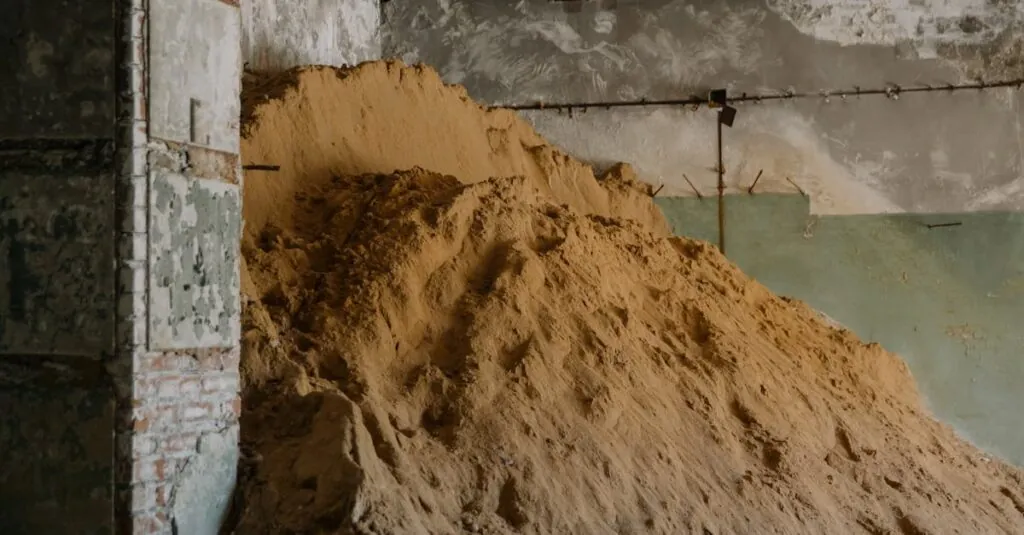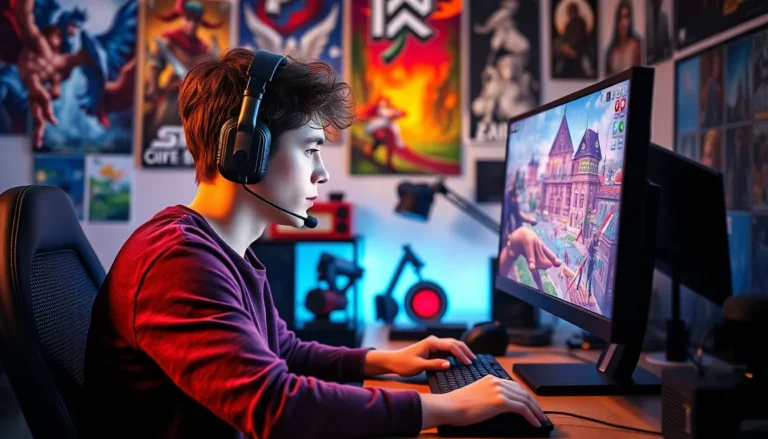Table of Contents
ToggleImagine settling in for a cozy gaming night, only to be greeted by the dreaded sight of a bricked Wii system. It’s like finding out your favorite pizza place is closed—devastating and totally unfair. When a Wii console bricks, it’s not just a technical hiccup; it feels like a betrayal from your beloved gaming companion.
But fear not! Understanding what causes these brick disasters can save the day and keep your gaming dreams alive. From software updates gone rogue to the perils of modding, there’s a world of knowledge that can turn you from a frustrated gamer into a Wii wizard. Dive into the quirky yet serious realm of Wii system bricks and discover how to prevent them from crashing your gaming party.
Overview of Wii System Bricks
Wii system bricks occur when a console becomes non-functional due to software or hardware issues. Users often experience a bricked system as a frustrating setback in their gaming journey. Common causes include failed software updates, corrupted data, or improper modding practices. Each of these factors can disrupt the console’s ability to boot up or load games.
Understanding the types of bricks is essential. A full brick prevents any startup, while a partial brick might allow some functionality, like access to the system menu but not to games. Both situations create challenges for gamers looking to enjoy their favorite titles.
Avoiding system bricks requires vigilance during updates. Verifying the integrity of all software before installation can help maintain system health. Users also benefit from performing regular system checks and backing up data.
Engaging in modding entails inherent risks. Modifications can lead to unexpected behaviors, including bricking. Regularly updating the console’s firmware is crucial for modded systems to ensure stability and performance.
Support communities exist to assist users encountering issues. Many forums and websites provide troubleshooting tips specific to each type of brick. Following expert advice helps restore functionality in many cases, reducing feelings of helplessness.
Learning about Wii system bricks equips gamers to take proactive steps. With the right knowledge, users can enjoy their system safely and avoid disruptions in their gaming experiences. This understanding reinforces a commitment to preserving the integrity of the console over time.
Causes of Wii System Bricks
Understanding the causes of Wii system bricks can help users maintain their consoles and enjoy uninterrupted gaming. Several factors contribute to this problem, primarily focusing on hardware issues and software corruption.
Hardware Issues
Hardware issues often cause a bricked Wii system. Overheating can damage internal components, rendering the console inoperable. A malfunctioning power supply also impacts functionality, potentially leading to shutdowns. Loose connections within the console might disrupt power flow and performance. Damage from physical impacts, such as drops or spills, results in both immediate and long-term malfunctions. Aging hardware components, after years of use, can degrade in quality and contribute to failure. Addressing these hardware issues promptly increases the likelihood of restoring functionality without significant repairs.
Software Corruption
Software corruption stands as a primary cause of Nintendo Wii system bricks. Incomplete updates leave the firmware in a compromised state, which prevents normal operation. Compatibility issues arise when users install pirated software or custom channels, potentially corrupting system data. Accidental deletion of vital system files leads to instability, causing the console to malfunction. Sudden power interruptions during updates further exacerbate these problems, leading to incomplete installations. Keeping system software updated and verifying the legitimacy of downloads prevents such issues, preserving console functionality.
Signs of a Bricked Wii System
Identifying a bricked Wii system involves recognizing specific symptoms. Clear signs help determine if the console requires attention or repair.
Common Symptoms
A non-responsive console often indicates a brick. Users notice that it fails to power on or display images. Error messages may appear, signaling issues with system functionality. In some instances, the console might respond slowly or freeze during operation. Additionally, unusual noises, like beeping or clicking, suggest potential hardware malfunctions. An inability to access menus or settings further confirms that the system is bricked. Observing these symptoms can help pinpoint the problem early.
Diagnostic Steps
Conducting diagnostic steps enhances troubleshooting efforts. First, check power supply connections for any loose cords or damage. Testing the outlet with another device ensures that power is available. Users may also benefit from removing any inserted discs or external devices to eliminate possible interference. Next, attempting a hard reset can sometimes restore basic functionality. Holding down the power button for several seconds may help. If these methods fail, consider seeking assistance from support communities for more advanced troubleshooting techniques. Utilizing these steps often leads to clearer insights regarding the console’s condition.
Solutions for Wii System Bricks
A bricked Wii system can be fixed through several methods. Understanding these solutions empowers gamers to restore their consoles effectively.
Restoring a Bricked Wii
Restoring a bricked Wii often involves specific steps. Utilizing recovery tools or reinstallation of system software helps address corruption issues. Users may also perform a hard reset by holding the power button for longer than five seconds. If that fails, accessing the Wii mode and reinstalling essential software can prove beneficial. Trying to use an original game disc can initiate recovery processes as well. Seeking assistance from support communities often provides additional methods tailored to individual situations.
Preventative Measures
Preventative measures significantly reduce the risk of Wii system bricks. Regularly updating system software keeps the console functioning correctly. Always verifying the legitimacy of downloads minimizes corruption risks. Backing up data ensures safety against unforeseen issues. Performing routine maintenance checks can identify potential hardware problems early. Using a reliable power source protects against sudden interruptions during updates. Establishing these practices creates a more resilient gaming experience.
Encountering a bricked Wii system can be disheartening for any gamer. By understanding the causes and taking proactive measures, users can significantly reduce the risk of these frustrating incidents. Regular maintenance checks and verifying software integrity are essential practices that ensure a smoother gaming experience.
Support communities are invaluable resources for troubleshooting and restoring functionality. With the right knowledge and tools, gamers can navigate the challenges of a bricked console and get back to enjoying their favorite games. Prioritizing preventative steps will lead to a more resilient and enjoyable gaming journey.







